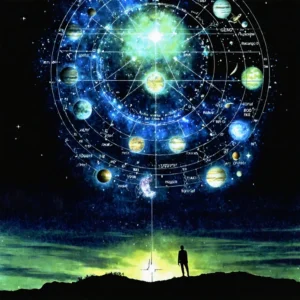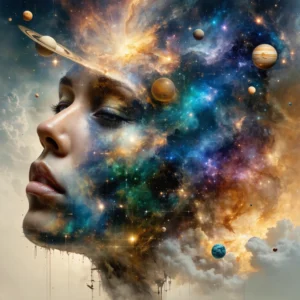
Introduction to a Hidden Past
In the heart of Washington, D.C., an astonishing tale unfolds. Researchers uncover hidden chapters in the city’s history that reveal how prominent politicians once frequented an establishment run by Mary Ann Hall during the 1800s. Instead of shying away from its secrets, the narrative invites readers to explore the vibrant, controversial world of parlor house brothels. Moreover, historians highlight that the now American Indian Museum sits on a site once known for lavish indulgences. Scholars and curious citizens continue to examine archives and eyewitness accounts, and therefore, a new perspective emerges. This secret history captures the imagination and challenges modern perceptions of power, wealth, and morality.
The Life and Legacy of Mary Ann Hall
Mary Ann Hall, also fondly known as “Pluto,” ruled a thriving establishment between the 1840s and 1878 at 349 Maryland Avenue S.W. She exhibited influential leadership skills and a keen understanding of social dynamics. Many assert that she managed her business with unmatched strategic brilliance. Politicians and wealthy individuals pursued a variety of pleasures on her premises, and her house served as a vibrant epicenter for discussions, debates, and discreet indulgences. Interestingly, Hall’s business acumen allowed her to navigate legal gray areas, as authorities often disregarded the establishment’s operations. By bribing officials and using sophisticated alliances, she maintained a safe haven for high-class clientele.
The Duality of Prostitution in 1800’s Washington
Washington, D.C. in the 1800s witnessed a striking dichotomy in prostitution culture. Two distinct models emerged: the elegant Parlor House brothels and the more working-class Bawdy Houses. Politicians and the affluent frequented the parlor houses, while laborers, office workers, and soldiers ventured into bawdy establishments. This narrative explores the lively environment in which both types of houses shaped the city’s social landscape. Some facets of this dichotomy include:
- Exclusive clientele accompanied by opulent décor
- Seamless integration of political power with nightlife
- Complex relationships between law enforcement and brothel managers
Additionally, many drinking parlors or saloons hosted secret backroom activities. Consequently, the vibrant social scene intertwined political influence with underground activities.
Regulatory Attempts and Transformation Over Time
Historians reveal that city officials attempted various measures to regulate these vibrant venues. The approaches included:
- Implementing selective law enforcement in elite neighborhoods
- Passing local ordinances aimed at curbing public indecency
- Engaging in covert arrangements with influential figures
Notably, efforts to tame the thriving underground economy ultimately failed due to the deep ties between influential politicians and the establishments. Transitioning from intolerance to pragmatic acceptance, many leaders understood that cracking down on the practice might spark wider social discord. As a consequence, the cultural norms of the period allowed these practices to persist unchallenged.
Comparative Table: Prostitution Venues in 1800’s Washington
| Category | Description | Typical Clientele | Social Perception |
|---|---|---|---|
| Parlor House Brothels | Opulent establishments offering discreet pleasures | Politicians, wealthy individuals, elite members | Seen as secret hubs of power and influence |
| Bawdy Houses | More straightforward, accessible venues | Laborers, soldiers, common workers | Often stigmatized and linked to lower socio-economic classes |
The Enduring Impact on Modern Washington
Today, Washington, D.C. bears subtle marks of its past. Tourists and locals wonder about the concealed layers beneath iconic buildings, including the American Indian Museum. Archaeologists and cultural historians connect these sites back to Mary Ann Hall’s era of intrigue. Furthermore, various cultural tours recount details of secret meetings, bribes, and lavish feasts among influential figures. The revelations inspire contemporary debates on power, morality, and historical memory. Indeed, historians and enthusiasts agree that the story encapsulates the interplay between public life and hidden desires. Finally, the narrative transforms our understanding of Washington’s evolution by emphasizing that shadows of the past remain engraved in the city’s urban tapestry. Thus, history continues to influence modern culture in unexpected ways.
Key Takeaways
- Mary Ann Hall pioneered a secretive yet influential enterprise.
- Parlor House brothels attracted an elite clientele including political figures.
- Regulatory measures struggled to contain a vibrant underground culture.
- The legacy of these practices influences modern cultural debates.
This exploration leads us to reconsider accepted narratives with renewed curiosity and critical insight. Undoubtedly, the hidden history of Washington, D.C. preserves lessons on power dynamics and societal transformation. By acknowledging these provocative chapters, researchers and the public broaden their understanding of the past. Equally important, historians continue to shed light on underexplored topics, which encourages us to reflect deeply on historical continuity and change. Consequently, the city’s remarkable journey offers valuable insights into the interplay between personal ambition, government influence, and cultural evolution.






